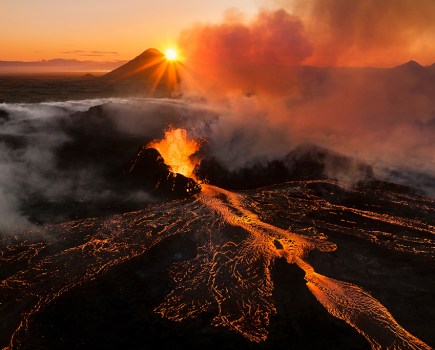
The longest optical zoom of any camera: Nikon Coolpix P1000, with 125x optical zoom
Nikon Coolpix P1000 at a glance
- 16MP BSI-CMOS sensor (6.2 x 4.6mm)
- ISO 100-6400
- 7fps burst shooting
- 24-3000mm equiv. f/2.8-8 lens (125x optical zoom!)
- 3.2in 921k-dot vari-angle LCD
- 2.36m-dot OLED electronic viewfinder
- 4K video at 30p
- 250-shot battery life
- 1,415g (including battery and SD card)
The past few years have seen some major releases in the full-frame mirrorless segment of the market, but the often-overlooked medium of the superzoom camera has a new champion: the Nikon Coolpix P1000. Superzooms, often called ‘all-in-ones,’ typically have DSLR-sized bodies with a fixed lens that usually offers a vast zoom range. And with the P1000, Nikon can boast the biggest focal length in the class, as this camera features a 125x zoom which serves up an insane 24-3000mm equivalent range.
It’s as if Nikon’s R&D department sketched out the P1000’s blueprint during a well-oiled work Christmas party and created a dream specification sheet that has the power to wow. In fact, when I was setting up in a photography hide to capture test images, pulling the P1000 from my bag drew audible gasps from fellow togs and birdwatchers: ‘Is that the big Nikon superzoom?’ So, the P1000 can be best described as the humble telescope of fixed-lens cameras, but how does it fare in the field during a real-world test?
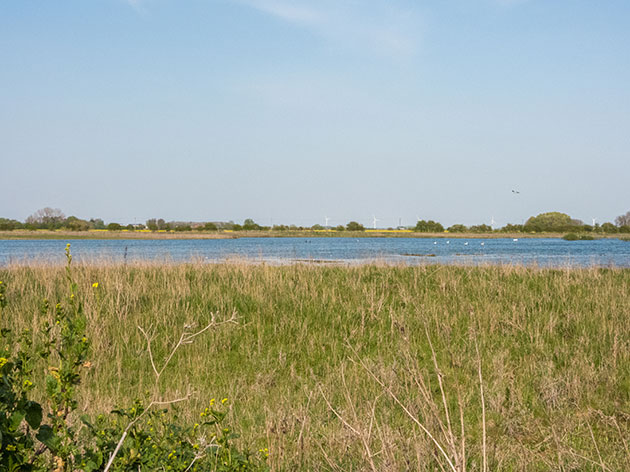
At 24mm, the P1000 does a good job of capturing vast landscape scenes. Credit: Matty Graham
Nikon Coolpix P1000: Impressive specs
Launched in July 2018, the Nikon Coolpix P1000 replaced the P900, which shared the same 16MP resolution but topped out at 2000mm. The P1000’s biggest headline feature is, of course, its whopping focal range. Offering a focal length of 24-3000mm equivalent, the P1000 covers everything from wideangle landscape views through to portraits with compressed perspectives, right through to wildlife photography and astrophotography towards the top end of the 3000mm zoom. This gives you a good idea of who this camera is targeted at – essentially photographers who don’t want to carry around a big DSLR/lens combo, accompanied by a bag full of additional heavy lenses.
The lens features a variable aperture, ranging from f/2.8 at the wide end and increasing to f/8 by the time you zoom in to 3000mm. The lens is built with 17 elements in 12 groups and employs five ED lens elements and one super-ED lens element to improve image quality. Protruding from the front of the camera when you zoom out, the lens almost doubles the length of the camera at full stretch, but it doesn’t feel top heavy and you can zoom via two different routes: the first via a switch on the top of the camera grip and the second via a switch on the side of the lens housing. The addition of both switches enables users to zoom with either your left or right hand.

Nikon Coolpix P1000 Rear (Image: Nikon)
Behind the lens is a 1/2.3in back-illuminated CMOS sensor that measures 62 x 4.6mm and serves up 16MP of resolution. And while that doesn’t sound like a huge amount compared to the 40+ million-pixel cameras available today, it’s a decent return for a superzoom camera of this type. For example, a rival option such as the Sony RX10 IV serves up 20MP, but can’t come close to matching the focal range, and only offers 24-600mm.
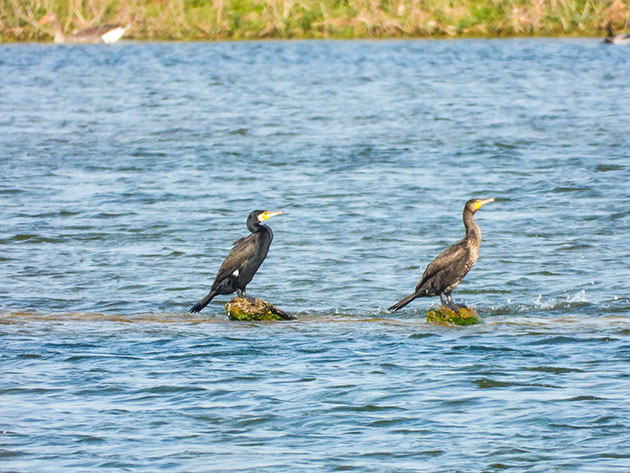
At 3000mm the Nikon P1000 can capture subjects the human eye can struggle to see. Credit: Matty Graham
This is a bulky camera, but that shouldn’t be misinterpreted as heavy, as the P1000 tips the scales at 1,415g (including battery and single SD memory card). To put things into perspective, my workhorse DSLR (a Pentax K-1 Mark II) weighs 1,010g, and that’s just the body, as adding one or two lenses to that set-up would push the total payload towards 3,000g.
Battery life is down compared to the older Nikon Coolpix P900, with a CIPA rating of 250 shots, but in practical use, I found the P1000 is good for a morning and afternoon of general photography. What’s more, the weight of the P1000 makes it easy to be carried around all day without burdening your shoulders, and its build would suit one of those handy holster sling bags, making it suitable for travellers who are short on space for photo kit in their backpacks.
Other neat features include a 3.2in 921k-dot vari-angle screen with five-level brightness adjustment (though sadly this is not touch-sensitive). Alternatively, photographers can choose to use the electronic viewfinder (EVF), with a sensor switching between the two options when you raise your eye up to the viewfinder. With such a vast focal length, it’s no surprise the P1000 features Nikon’s Dual Detect Optical Vibration Reduction (VR) system, which allows you to shoot up to five stops slower than would otherwise be possible.
Nikon’s Bluetooth Snapbridge technology (missing from the P900) allows easy pairing with smart devices, and the P1000 can shoot 4K video at 30p or Full HD video at 60p. Add to this USB charging and an external microphone jack and the P1000 starts to tread into vlogger territory – another reason P900 users may consider upgrading.
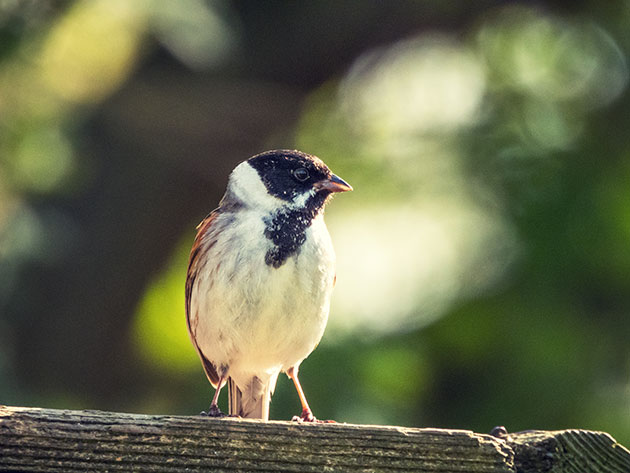
A great amount of detail can be recovered when images are captured in the raw format. Nikon P1000 at 270mm, 1/400sec at f/5.6, ISO 400. Credit: Matty Graham
Good quality, but there are areas of compromise
When you first use the camera, the temptation to zoom straight into 3,000mm is strong, and it’s absolutely startling what this camera can capture thanks to the 125x optical zoom magnification. For example, if you wanted to shoot a picture of the moon, you would actually have to zoom back out again as at 3,000mm, you can’t fit the moon into the frame.
The P1000 also offers an extended digital zoom option that stretches to 6,000mm, but this obviously can’t match the image quality of the optical zoom range. With such a vast focal range, the P1000 is a wildlife photographer’s dream, enabling shooters to capture frame-filling images of subjects like small birds from a great distance away.
Even with a big zoom like a 150- 600mm lens, paired with a 2x teleconverter and used on a crop-sensor APS-C, a focal length of around 1,800mm is the best DSLR users can hope to achieve. The P1000 smashes this and, thanks to the fact that you can now shoot in raw (NRW) format – a feature that was unavailable in the previous P900 model – the P1000 delivers impressive image quality, with a maximum file size of 4608×3456 pixels enabling photographers to make prints up to A3 in size.
It takes a little time and practice to retune your brain into what is actually achievable with this camera. Being able to keep your distance from wildlife subjects stacks the odds of bagging a frame and not scaring them away well in your favour, and I do have to admit that being free from the weight of a more hardcore DSLR set-up is a refreshing feeling.
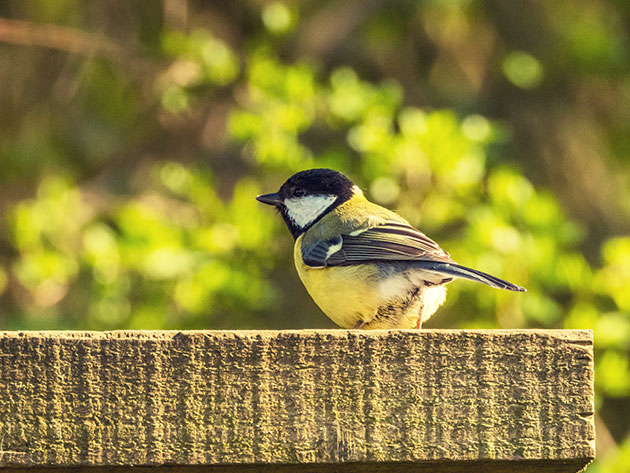
Taking some time to learn the autofocus options will help you to increase your hit rate. Nikon P1000 at 300mm, 1/500sec at f/5.6, ISO 400. Credit: Matty Graham
Autofocus
The Nikon Coolpix P1000 is not without its frustrations though and these mainly stem from the contrast-detection autofocus system. Of course, focusing at such long focal lengths is no easy feat for the camera, but photographers are strongly advised to explore the various autofocus settings to get the best results.
At longer focal lengths, I preferred to use the Target Finder feature paired with the full-time AF mode, as I found it locked on to subjects quicker than the other options. However, when shooting subjects closer to the camera at a wider focal length, switching to Single AF worked more successfully.
The contrast-detection AF system is not bulletproof and photographers will have to live with not getting the shot every time. Even in strong, midday lighting conditions there were times when the lens showed signs of struggling to establish focus. That said, I got far more hits than misses and I was able to quickly learn which mode worked best for individual situations.
Handling
Other niggles included the awkwardly placed Record Video button, which is directly above the Playback Review button, and I found myself recording snippets of video as I tried to review my images multiple times. Don’t get me wrong; I’m impressed Nikon included the dedicated Video Record button, but this would have been better placed on the camera’s top plate instead.
The placement of the pop-up ash is also quite unusual as it’s very forward – presumably to project the light past the large lens housing to avoid creating shadows. For more creative lighting, the P1000 also features a hotshoe mount that will accept external flashguns or a radio trigger to set off studio lighting.
Last on the negative front, the P1000 is not weather-sealed, so if it starts raining, photographers will have to make do shooting from the comfort of the photography hide, rather than being out in the wet stuff.

The huge zoom allows wildlife photographers to capture frame-filling images without spooking subjects. Nikon P1000 at 400mm, 1/320sec at f/5.6 ISO 400. Credit: Matty Graham
Although I do have a couple of issues with some button placements, Nikon did get the positioning absolutely right with the dedicated Snap Back button, which is located on the side of the lens next to the zoom switch. Pressing this button quickly zooms out the lens and then back in, affording photographers a moment to locate their subject again before the focal length quite literally snaps back to whatever it was set to previously. This trick is especially useful when you are shooting beyond 2,000mm equivalent and handholding the P1000, as it can be easy for the subject to fall out of the frame even by moving the camera fractionally.
The P1000 also offers a feature that allows the user to select a predetermined focal length at start-up – meaning that instead of starting up at the default 24mm, the camera can start up at various other increments (for instance, 35mm, 50mm, 70mm, 85mm, 105mm or 135mm).
Also well placed is the wide control ring that surrounds the lens. This can be programmed to change variables such as exposure compensation, ISO and white balance so that you can simply twist the ring and adjust the settings at lightning pace.
Video
Those who wish to capture video to accompany stills can shoot in 4K at 30p or Full HD at 60p; shooting at this rate will enable photographers to use the footage at half speed for a slow-motion effect. At the other extreme, the P1000 also includes both a ‘Superlapse’ feature that enables users to create a fast-motion continuous sequence and time-lapse for more creative footage.

The Snap Back option helps re-establish where your subjects are in the frame. Nikon P1000 at 400mm, 1/640sec at f/6.3, ISO 400. Credit: Matty Graham
Verdict: An attractive proposition
With an ISO range of 100-6400, the P1000 will force photographers to up the sensitivity in low-light conditions. With a maximum aperture of f/8 at 3000mm, slow shutter speeds will increase the risk of camera shake – so zooming out a little to select a faster aperture while at the same time increasing the ISO is the way to speed up the exposure. From my test images, I discovered that images taken at ISO 1600 were decent enough, with image quality being compromised at ISO 3200. Even the burst rate of 7fps isn’t bad, and although it can’t compete with DSLRs like the Nikon D500 (10fps), it will enable photographers to capture action sequences, maximising their chances of bagging that perfect wildlife moment.
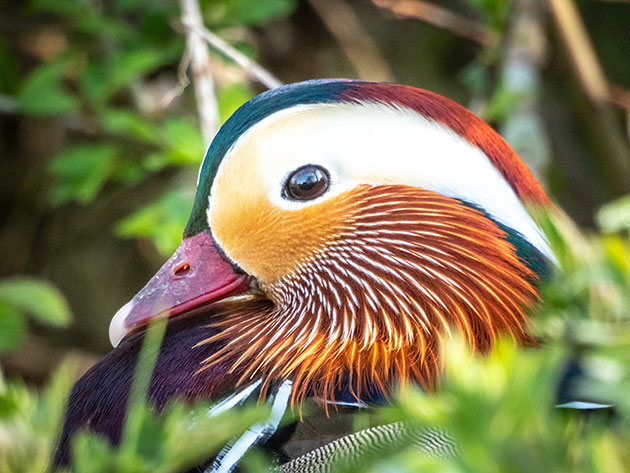
For a superzoom camera, the P1000 achieves a high level of detail and sharpness within the frame. Nikon P1000 at 1000mm, 1/125sec at f/7.1 , ISO 200. Credit: Matty Graham
Some would argue the P1000 is a one-trick pony, but I think that’s selling this impressive camera incredibly short. Realistically, if you want to capture distant subjects and don’t have the budget for big fast lenses, the P1000 is an epic alternative that comes in just below the £1,000 price barrier – well within the reach of enthusiast photographers looking to take their wildlife imagery to the next level.
While pro photographers may find the autofocus too slow, this camera will find plenty of favour for wildlife photography, particularly birders who are currently dissatisfied with trying to shoot small subjects with lenses that would generally top out at up to 500mm.
The appeal of carrying one medium-weight camera instead of a body and multiple lenses is obvious and the addition of raw stills, 4K video and a dedicated Bird-Watching mode further add to the P1000’s credentials in this market. There’s plenty to attract current superzoom users, both of rival brands and users of Nikon’s older P900 model. The addition of the longer maximum focal length, a larger LCD, a higher- resolution EVF, external microphone port, hotshoe flash mount, 4K video, raw support and Bluetooth represents a major upgrade.
Ultimately, the P1000 justifies the hype, yet at the same time feels like the foundation of a new wave of superzoom cameras rather than the pinnacle. Make no mistake, Nikon has something special here and, as much as the P1000 will be popular, I can’t wait to see how the brand builds on this technology as and when the P1000 is superseded.

A Macro mode enables photographers to capture close-ups too. Nikon P1000 at 50mm, 1/1600sec at f/4.5, ISO 200. Credit: Matty Graham
Shoot the whole moon
In addition to the vast focal length, the Nikon Coolpix P1000 has some additional features that make it a candidate for astrophotography. In fact, the P1000 has a dedicated Moon mode, which immediately sets the focus to infinity, but also enables the focal length to jump straight to 1,000mm by simply pressing the OK button. The Moon mode also introduces some creative features with the user able to cycle through a number of colour-temperature options to turn the moon blood orange or pure white – although you can also alter colour temperature by shooting in the raw file format instead of JPEG.
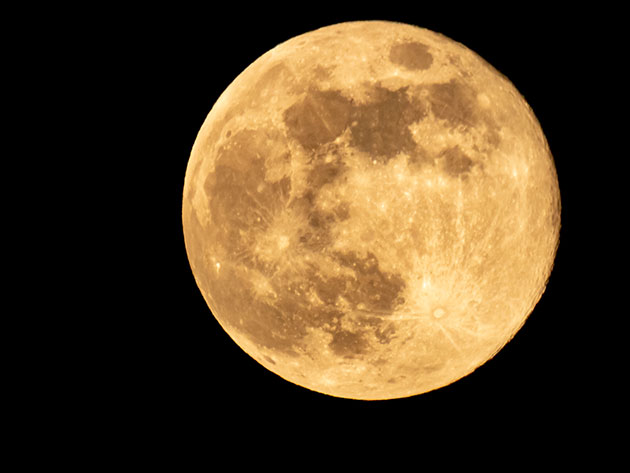
Backing off from 3,000mm enables use of faster apertures. Nikon P1000 at 2400mm, 1/125sec at f/7.1, ISO 400. Credit: Matty Graham
Setting up the Nikon Coolpix P1000 for moon photography on a tripod is strongly advised as handholding can lead to you not only losing the subject and having to recompose, but also introducing shake into the scene, which is easily done shooting at focal lengths past 1,000mm and is especially vulnerable at 3,000mm. I also preferred to compose my scene using the vari-angle screen rather than the EVF and, as previously mentioned, back off from 3,000mm to around 2,400mm, which had the added advantage of enabling a faster aperture of f/7.1 instead of f/8 at 3,000mm. Pressing the shutter added too much vibration, even with the camera on the tripod, so I activated the self-timer mode (set to three seconds), which gave time for any vibrations to dampen before the image was captured.
More links:






